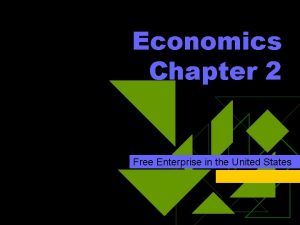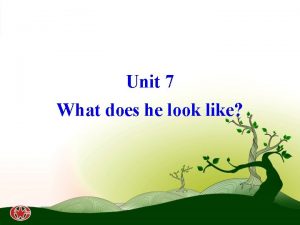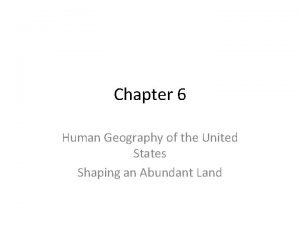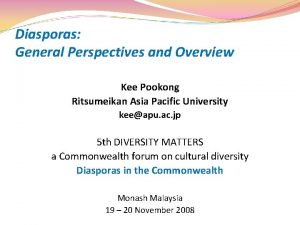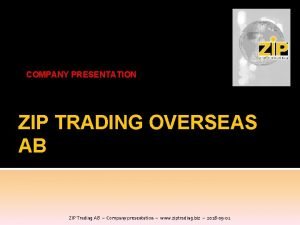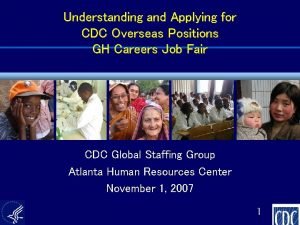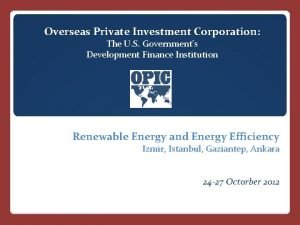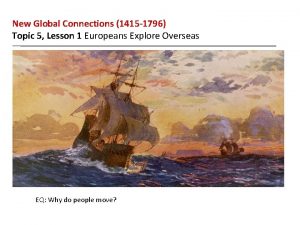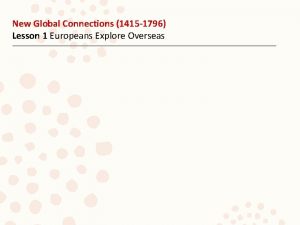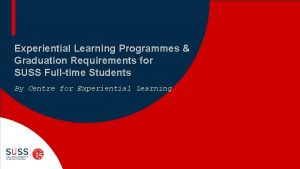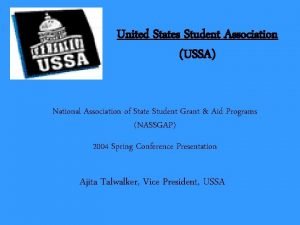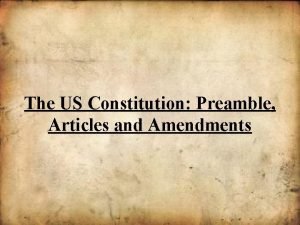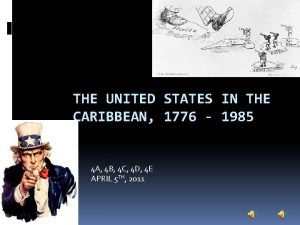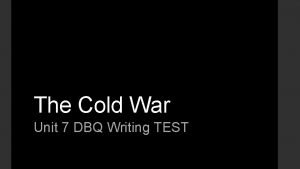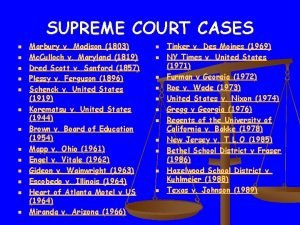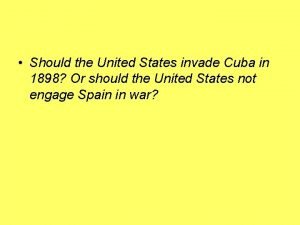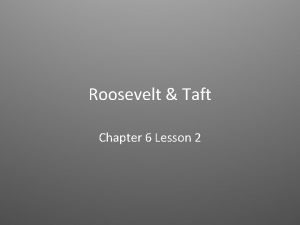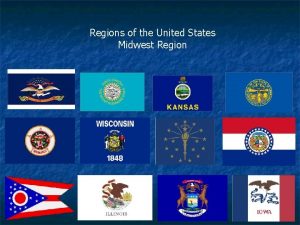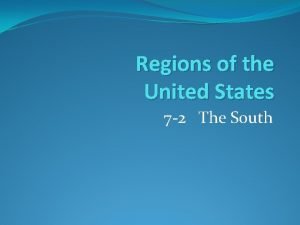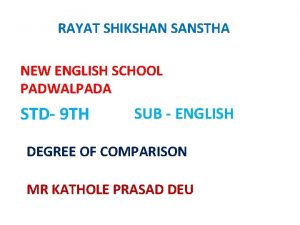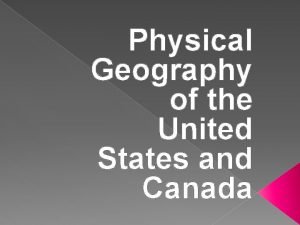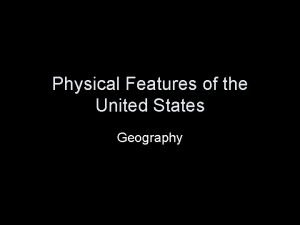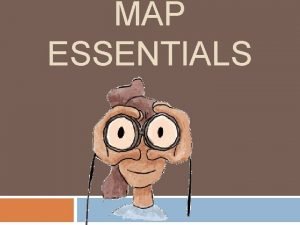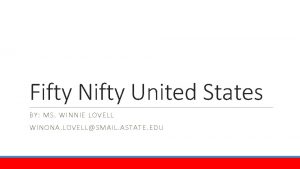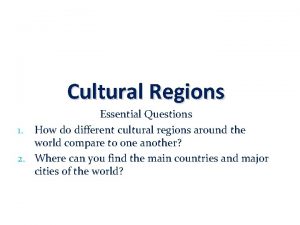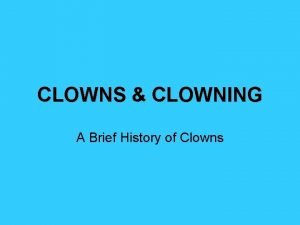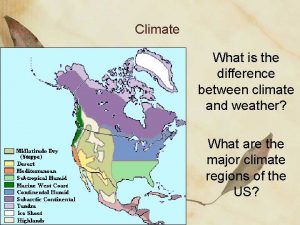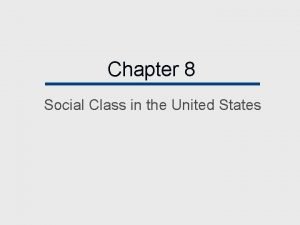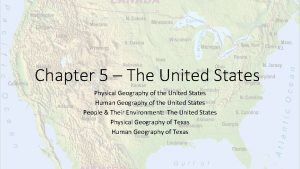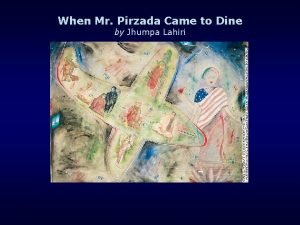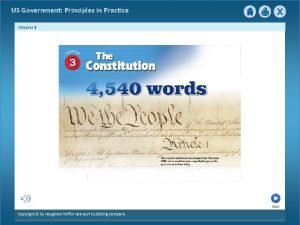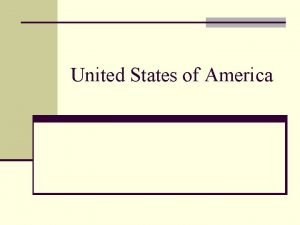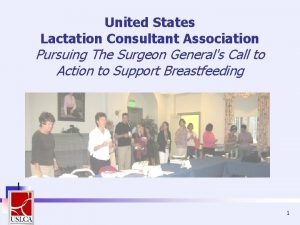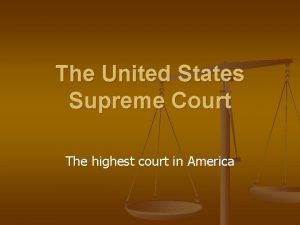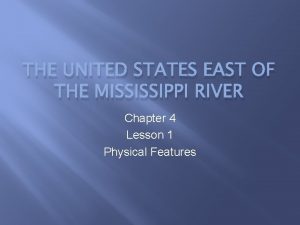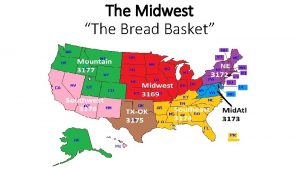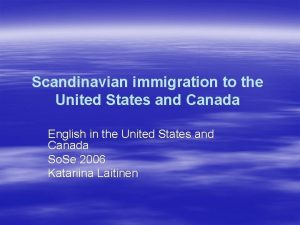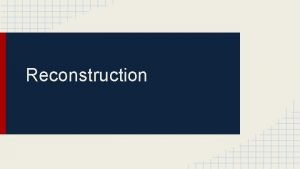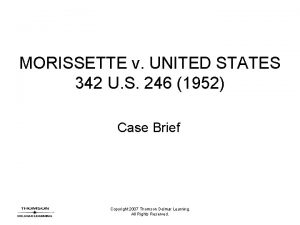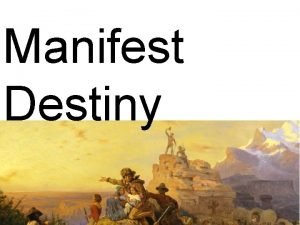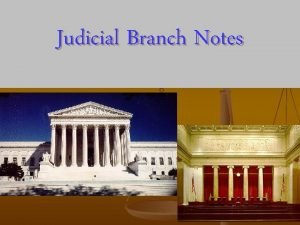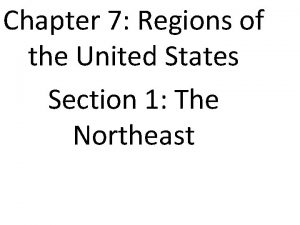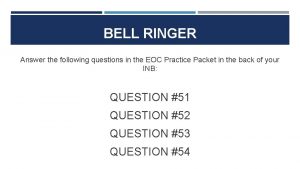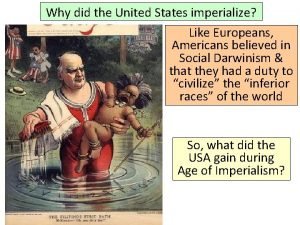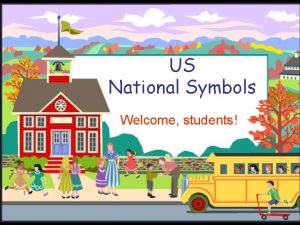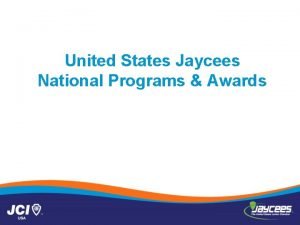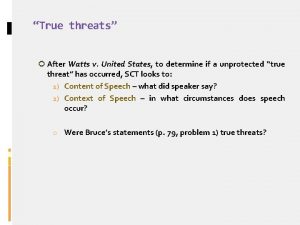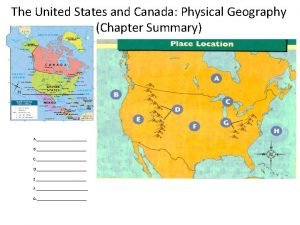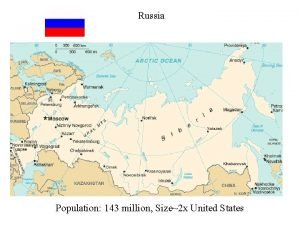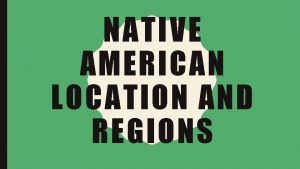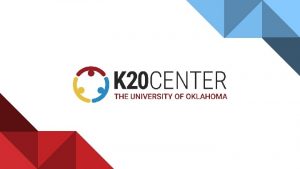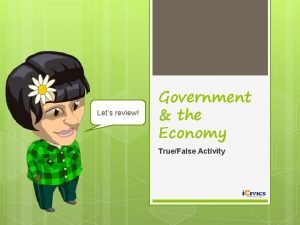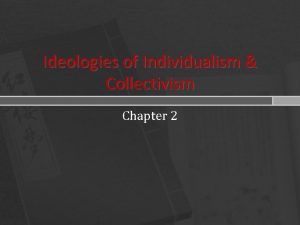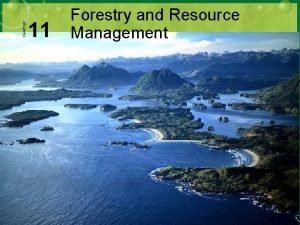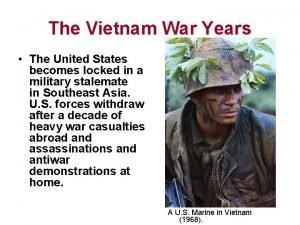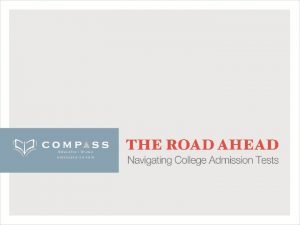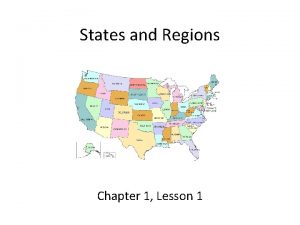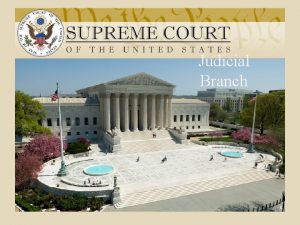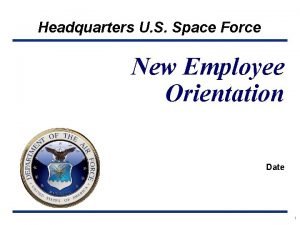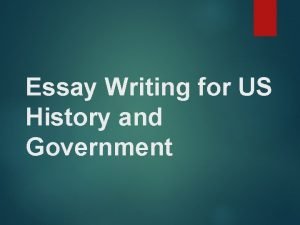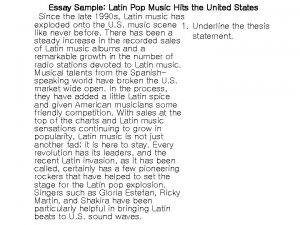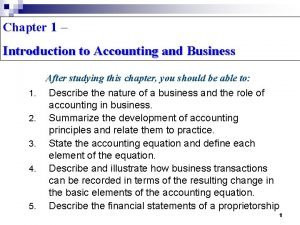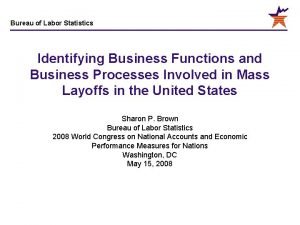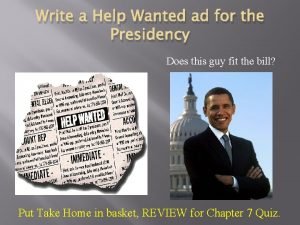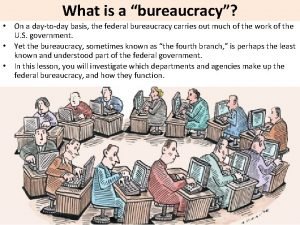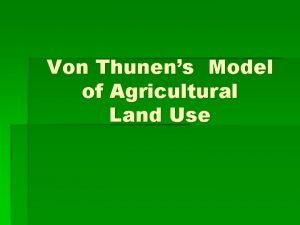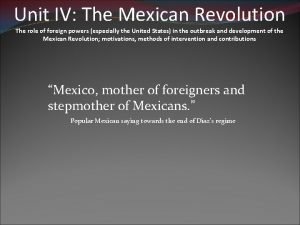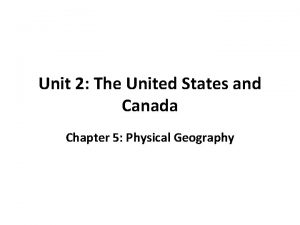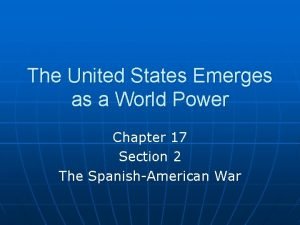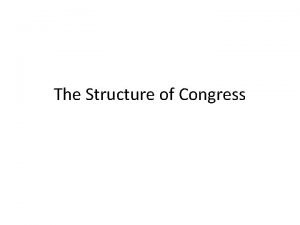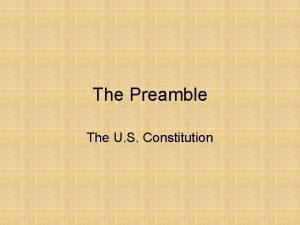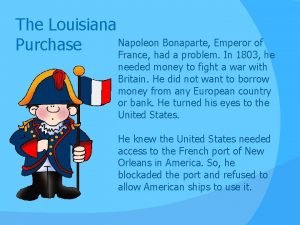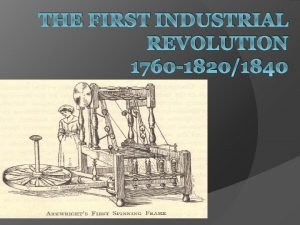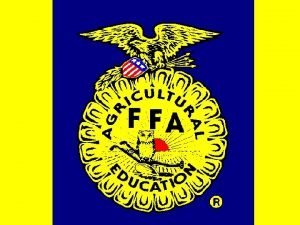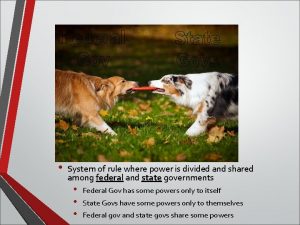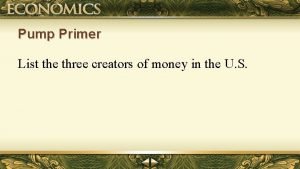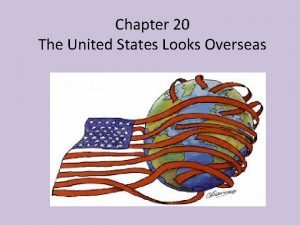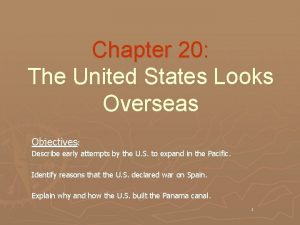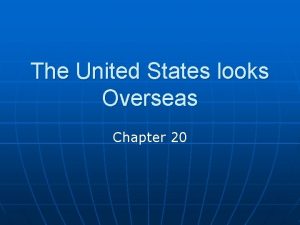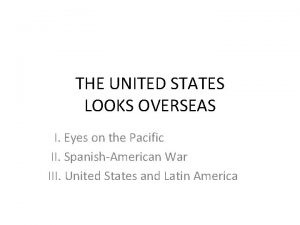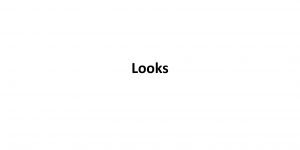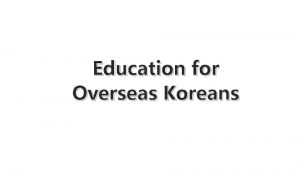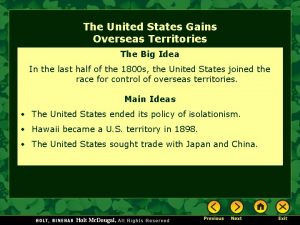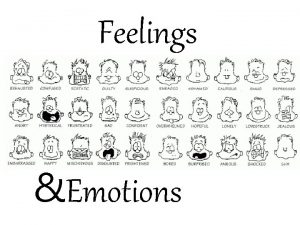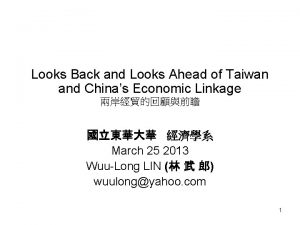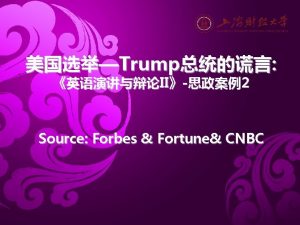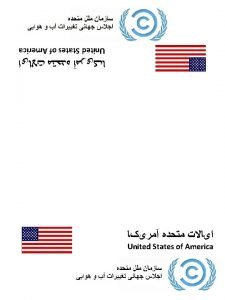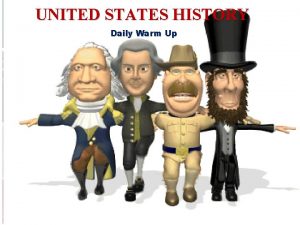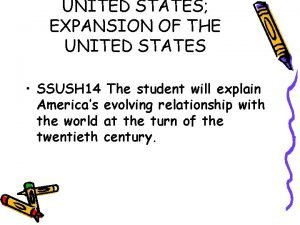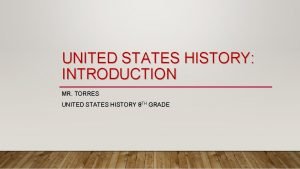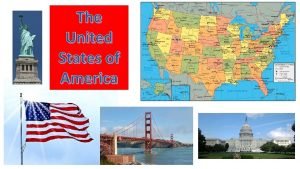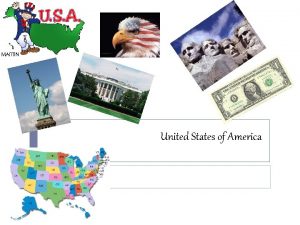Chapter 20 The United States Looks Overseas Key



































































































- Slides: 99

Chapter 20 The United States Looks Overseas

Key Terms for the Chapter • Isolationism – Avoiding involvement in other countries’ affairs • Imperialism – Building empires by imposing political and economic control over peoples around the world



The Turner Thesis • Frederick Jackson Turner – Created idea that western frontier defined American History • expansionists believed that overseas was the new frontier and would bring new riches and power

Economic Growth • Expansionists argued that future prosperity depended on building up trade • U. S. had a powerful industrial economy and produced more than Americans would buy

Economic Growth • There was a fear that if U. S. did not expand it would be shut of global markets and denied raw materials • Alfred T. Mahan stated that the key to strong trade was a powerful navy

United States Looks Overseas • Purchasing Alaska – 1867 The United States purchased Alaska from Russia for $7. 2 million (about 2 cents an acre) – Alaska was full of resources (gold and oil) • Alaska Gold Rush of 1897 -1898


Spreading American Values • In the late 1800 s many Americans believed that Americans of the “Anglo-Saxon race” were superior to “lesser races” in other nations • Argument was Americans had a divine duty to spread Christian values and western civilization around the world.

Gaining Foothold in the Pacific • Expansionists had interest in various Pacific islands, and saw them essential for expanding influence and trade

• Samoa

Gaining Foothold in the Pacific • Samoa – U. S. had interest in Samoa to use as coaling stations for ships • Other European countries also wanted Samoa and Britain, Germany, and the U. S. almost went to war – In 1899 the U. S. and Germany divided the islands • People in Samoa had no say in the matter.



Gaining Foothold in the Pacific • Hawaii – U. S. saw Hawaii as a military outpost in Pacific – 1893 American planters and 50 U. S. Marines overthrew Queen Liliuokalani. • President Grover Cleveland refused to annex Hawaii because the revolt had been illegal – on July 7, 1898 Hawaii became a territory of U. S. when it was annexed by President William Mc. Kinley


• Hawaii




Soooo… Fun Test I Please describe what Manifest Destiny is and how did it apply to Alaska and Hawaii.

Carving Up China • Late 1800 s China lost a war and European powers wanted to take advantage of China’s weakness – European power and Japan started dividing China into spheres of influence (areas where another nation has economic and political control)



Carving Up China • At first, U. S. were not part of the activity, but U. S. officials feared they would be excluded from trading with China – Secretary of State John Hay called on nations to keep an “open door” policy in China.



Carving Up China • Boxer Rebellion – A secret Society called Righteous and Harmonious Fist was formed to try and combat foreigners in China • Became known as Boxers because of their ceremonial exercises that resembled shadowboxing – In spring of 1900 the Boxers began a rebellion to expel foreigners

Carving Up China • The boxers attacked and killed westerners and Chinese Christians. • European powers and the U. S. sent in 18, 000 troops with modern weapons and crushed the rebellion





Soooo… Fun Test II 1. Who were the boxers and what did were their goals and methodology. 2. Why did European nations think they could carve up China?

The Spanish-American War • Cuba had been under Spanish control since 1492 • After Centuries of being under Spain’s harsh control Cuban’s started to rebel – First rebellion started in 1868 and lasted 10 years, but was unsuccessful


The Spanish-American War • Cubans started another rebellion in 1895 • To stop the revolt the Spanish began a policy of reconcentration (movement of large numbers of people into detention camps for military or political reasons) – 200, 000 Cubans would die in these camps due to poor sanitation and starvation

The Spanish-American War • Cubans, led by Jose Marti, asked for help from the U. S. – Marti was a leader of the rebels, but was killed in Cuba before he was able to see Cuba free from Spanish rule


The Spanish-American War • Many Americans wanted to help the Cuban rebels, but U. S. government was resistant to send troops • Americans wanted to help Cuba to protect their investments – Americans had over $50 million in sugar plantations, railroads, and iron mines

Soooo… Fun Test III 1. What were reconcentration camps, why were they created and what was an effect of their creation? 2. What was one reason Americans wanted to enter the Spanish American War?





Yellow Journalism • yellow journalism- A sensational style of reporting that exploits, distorts, or exaggerates the news

The Spanish-American War • Newspapers swayed public opinion towards war by using Yellow Journalism – Led by Joseph Pulitzer of the New York World and William Randolph Hearst of the New York Journal







The Spanish-American War • U. S. declares war -February 15, 1898 the Maine sinks and the United States declares war on Spain

Spanish-American War • The U. S. Goes to War – April 20, 1898 the U. S. declares war on Spain – The first main battle of the war took place in the Philippines • May 1, 1898, Commodore George Dewey led a small fleet of ships to Manila Bay and sank the entire Spanish squadron • The U. S. did not lose a single ship or life

Soooo… Fun Test IV 1. Please describe Yellow Jopurnalism and give an example. 2. What was The Maine and how did it cause the Spanish American War?



Spanish-American War • The Filipinos were also fighting for independence from Spain – Emilio Aguinaldo was the leader of the Filipino rebels – Instead of giving independence to the Filipinos the U. S. took control of the islands


Spanish-American War • War in the Caribbean – Most of the fighting took place around Santiago and at sea


Spanish-American War • War in the Caribbean – U. S. troops were poorly trained, but eager to fight • One of the best known units was the Rough Riders, which was led by Theodore Roosevelt • Roosevelt led a successful charge up San Juan hill, which became the most celebrated event of the war

Americans 205 killed and 1, 180 wounded Spanish lost only 58 dead, 170 wounded, and 39 captured


Spanish-American War • Once Spain surrendered Cuba, American troops invaded and quickly took control of Puerto Rico


Spanish-American War • December 1898, a treaty was signed – Cuba received its independence – Puerto Rico, Philippines, islands of Guam, and Wake islands became territories of the U. S.






Soooo… Fun Test V 1. What are four results of the Spanish American War?

The United States and Latin America • Panama Canal – The Isthmus of Panama was chosen because it was only 50 miles wide – perfect location to shorten trips from the West Coast to the East Coast

The United States and Latin America • U. S. offered Columbia $10 million and $250, 000 yearly rent to build the canal – Columbia did not accept the deal



The United States and Latin America • Panamanians started a revolution against Columbia – U. S. sent gunboats and Marines to support Panama – Panama gains its freedom and the U. S. received the land to build the canal

“Gun Boat Diplomacy”



The United States and Latin America • Fighting Disease – First obstacle to building the canal was overcoming diseases • Malaria and Yellow Fever (carried by mosquitoes) • William C. Gorgas

The United States and Latin America • Constructing the Canal – Construction involved three main tasks • Cut through a mountain • Dam a river • Build locks







The United States and Latin America • Canal Was finished August 15, 1914 (six months ahead of schedule)

Soooo… Fun Test VI 1. Who originally owned the land where the Panama Canal was built and how did it change hand? 2. Why did America want to build the Canal? 3. What is Gunboat Diplomacy? 4. Name three reasons that building the Canal was dangerous.

The United States and Latin America • Wielding a “Big Stick” in Latin America – Roosevelt Corollary to the Monroe Doctrine • It was the job of the U. S. to protect the Western Hemisphere from European nations • When neighbors of the U. S. got into disputes with foreign nations, the U. S. had the right to intervene and restore order


The United States and Latin America • William Howard Taft believed in dollar diplomacy – Taft wanted bankers and businesses to invest in Latin America – Dollar Diplomacy led to many military interventions because the U. S. had to protect its investments

The United States and Latin America • Relations With Mexico – 1911 Mexico entered into a violent revolution – President Woodrow Wilson believed U. S. foreign policy should support democracy throughout the world, and hoped Mexico would develop its own democratic government

The United States and Latin America • The United States had trouble staying out of the conflict – 1914 an incident in Tampico, Mexico led to U. S. sailors being arrested – Francisco Villa (Pancho Villa) kept entering New Mexico and raiding towns. (Killed 18 Americans in one raid)

 Chapter 2 free enterprise in the united states
Chapter 2 free enterprise in the united states What does he look like?
What does he look like? What he looks like or how he looks like
What he looks like or how he looks like Chapter 6 human geography of the united states
Chapter 6 human geography of the united states States west of the mississippi river
States west of the mississippi river Monash university international office
Monash university international office Europeans explore overseas
Europeans explore overseas Overseas chinese population
Overseas chinese population Zip trading
Zip trading Cdc jobs overseas
Cdc jobs overseas Ktk overseas ag
Ktk overseas ag Overseas private investment corp
Overseas private investment corp New global connections unit test
New global connections unit test Lesson 1 europeans explore overseas
Lesson 1 europeans explore overseas Suss portfolium
Suss portfolium Office of overseas schools
Office of overseas schools Building overseas empires
Building overseas empires Was the united states on the axis powers or allied powers?
Was the united states on the axis powers or allied powers? Settlement patterns
Settlement patterns Sectionalism map of the united states
Sectionalism map of the united states Us pro soccer
Us pro soccer Marshall case
Marshall case United states student association
United states student association The united states ought to provide a universal basic income
The united states ought to provide a universal basic income What is preamble
What is preamble The united states in the caribbean 1776 to 1985
The united states in the caribbean 1776 to 1985 Products of the southeast
Products of the southeast Expansion of the united states of america 1607 to 1853 map
Expansion of the united states of america 1607 to 1853 map How does nicholas novikov describe the united states
How does nicholas novikov describe the united states Previous owner of original united states
Previous owner of original united states Awake united states author
Awake united states author Heart of atlanta motel v. united states
Heart of atlanta motel v. united states We have pacified some thousands of the islanders
We have pacified some thousands of the islanders Chapter 6 lesson 2 roosevelt and taft
Chapter 6 lesson 2 roosevelt and taft Midwestern region of the united states
Midwestern region of the united states 7 regions of the united states
7 regions of the united states The united states is the greatest buyer positive degree
The united states is the greatest buyer positive degree United states and canada physical map
United states and canada physical map Physical features of the united states
Physical features of the united states Map of the world with latitude and longitude lines
Map of the world with latitude and longitude lines 50 nifty united states
50 nifty united states North central america
North central america Ancient clowns
Ancient clowns Subtropical united states
Subtropical united states Consequences of social class
Consequences of social class Physical geography of the united states
Physical geography of the united states Ibn-tamas v. united states
Ibn-tamas v. united states Theme of mr pirzada came to dine
Theme of mr pirzada came to dine United states government: principles in practice answers
United states government: principles in practice answers Geographical position usa
Geographical position usa United states lactation consultant association
United states lactation consultant association What is the highest court in the united states? *
What is the highest court in the united states? * What is the mississippi river
What is the mississippi river Midwest breadbasket
Midwest breadbasket How many states canada
How many states canada United states v. cruikshank apush
United states v. cruikshank apush Morisette v. united states
Morisette v. united states What did manifest destiny do
What did manifest destiny do Judicial branch
Judicial branch Fifty nifty united states
Fifty nifty united states Yosemite sam confederate
Yosemite sam confederate Bell ringer response sheet
Bell ringer response sheet Why did the united states imperialize
Why did the united states imperialize National symbols usa
National symbols usa United states jaycees
United states jaycees United states core data for interoperability
United states core data for interoperability Ann arbor mi population pyramid
Ann arbor mi population pyramid Watts vs united states
Watts vs united states The physical geography of the united states and canada
The physical geography of the united states and canada United states
United states Native american tribes in the united states
Native american tribes in the united states Melting pot and salad bowl theory
Melting pot and salad bowl theory True or false
True or false Individualism principles
Individualism principles Chapter 11 forestry and resource management
Chapter 11 forestry and resource management United states bicycle route system
United states bicycle route system The us center of population has moved steadily to the
The us center of population has moved steadily to the United states vietnam
United states vietnam United states bureau of labor statistics
United states bureau of labor statistics 5 regions of united states
5 regions of united states United states bureau of labor statistics
United states bureau of labor statistics United states judicial branch
United states judicial branch Afi36-807
Afi36-807 United states history and government regents
United states history and government regents Pop music essay
Pop music essay Comprises 70% of business entities in the united states
Comprises 70% of business entities in the united states United states bureau of labor statistics
United states bureau of labor statistics President as chief administrator
President as chief administrator The us bureaucracy
The us bureaucracy Von thunen agricultural model
Von thunen agricultural model What the united states has fought for
What the united states has fought for Unit 2 the united states and canada worksheet answers
Unit 2 the united states and canada worksheet answers United states acquisitions and annexations 1857-1904
United states acquisitions and annexations 1857-1904 What are the two houses of the united states congress?
What are the two houses of the united states congress? American preamble
American preamble Napoleon louisiana purchase
Napoleon louisiana purchase William cockerill invention
William cockerill invention Symbol for ffa president
Symbol for ffa president Us v lopez commerce clause
Us v lopez commerce clause Who are the three creators of money in the united states
Who are the three creators of money in the united states
